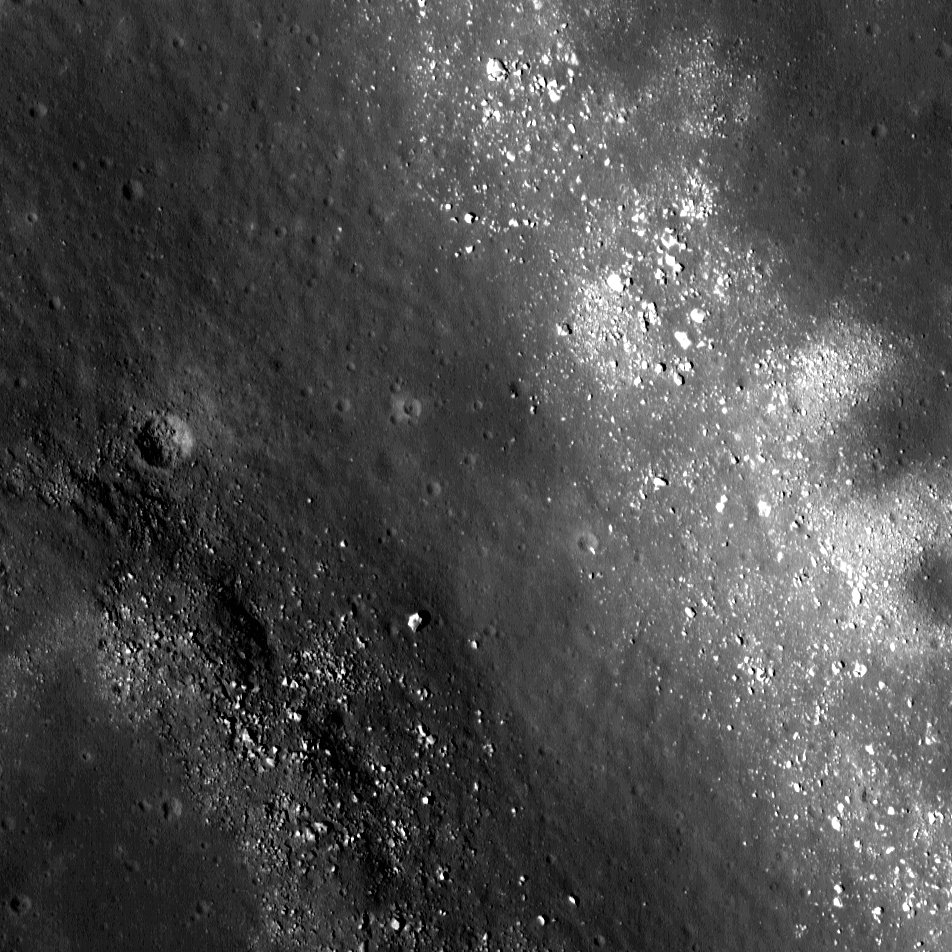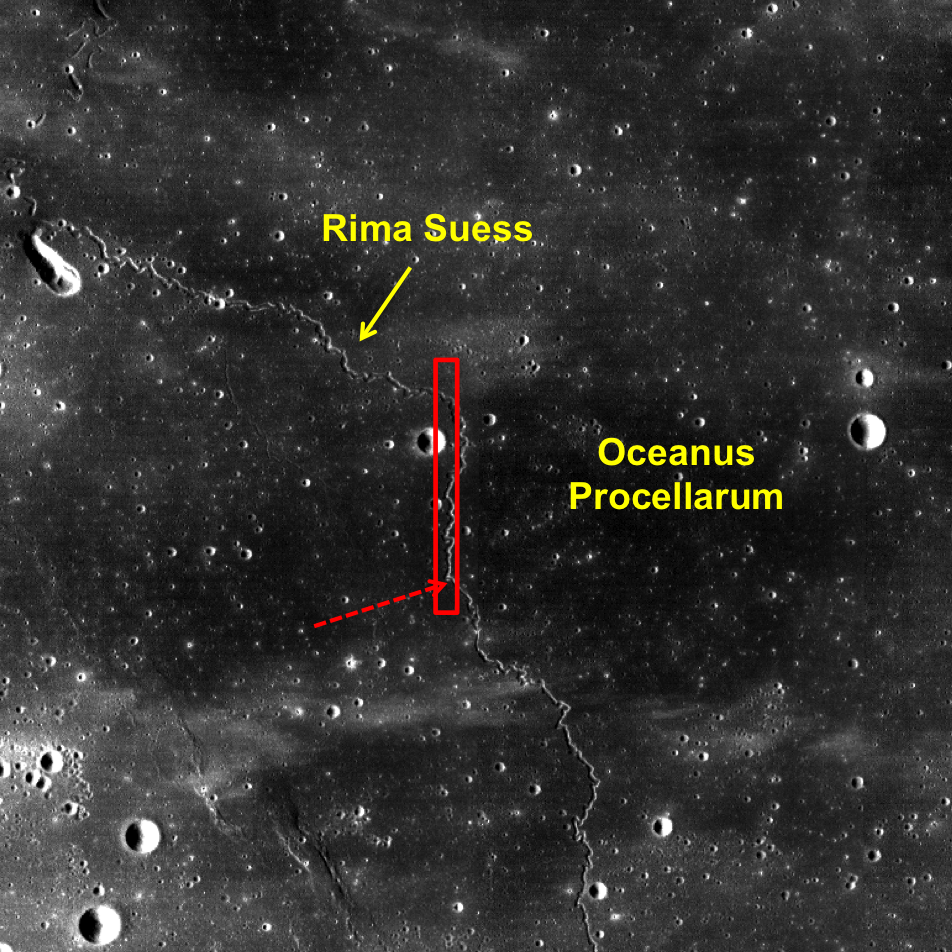
Rima Suess (7.81°N,-47.59°E), located in Oceanus Procellarum, is a long, meandering narrow depression called a sinuous rille. Sinuous rilles, most commonly found in mare surfaces, are thought to have been carved by hot rivers of lava, which thermally and mechanically eroded the channels we see today. About 3.5 billion years ago the Moon was much more volcanically active, pouring vast amounts of lava onto the surface. The large dark mare regions of the Moon were formed by massive eruptions of iron rich basaltic lava during this time.
The boulders along the walls of the rille probably were a coherent mass when the lava flows cooled, breaking up over billions of years of impacts into the boulders we see today. Gravity then pulled this material down the slope of the rille; this process is known as mass wasting. We see rock outcrops over the entire path of Rima Suess in the LROC NAC image M168516400R.

Lunar rilles are exciting places for lunar scientists because they may cut through and expose the different layers of lava flows in the maria. This gives scientists insight into the volcanic processes present during mare formation, and how they evolved with time. Explore the winding path of this portion of Rima Seuss in the full resolution LROC NAC below:
Related Posts:
Rilles as far as the eye can see in Prinz!
Published by Raquel Nuno on 5 June 2014